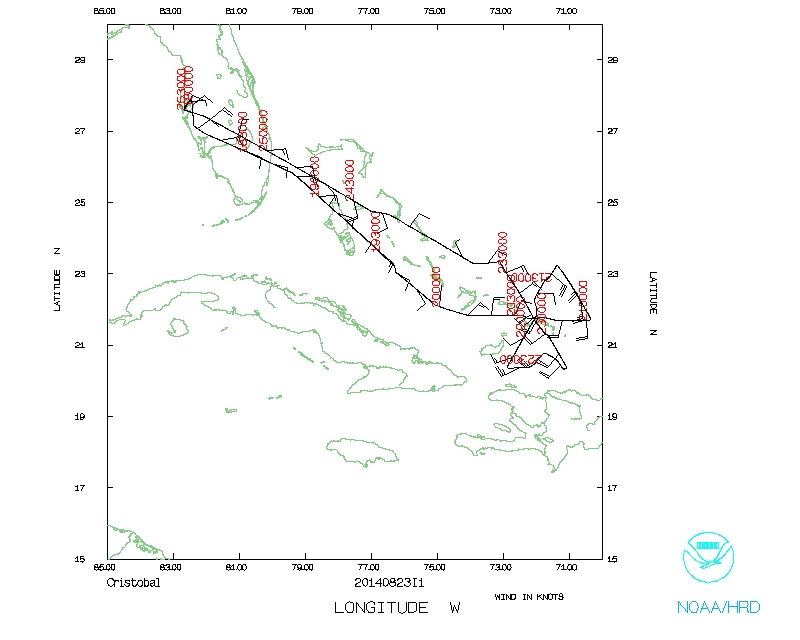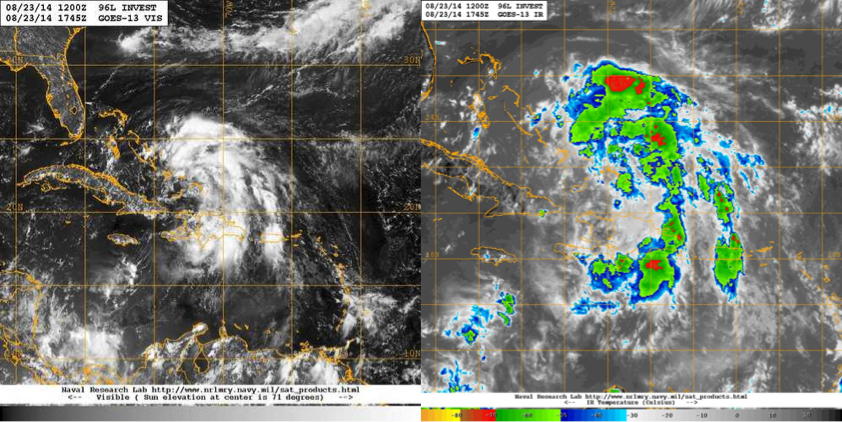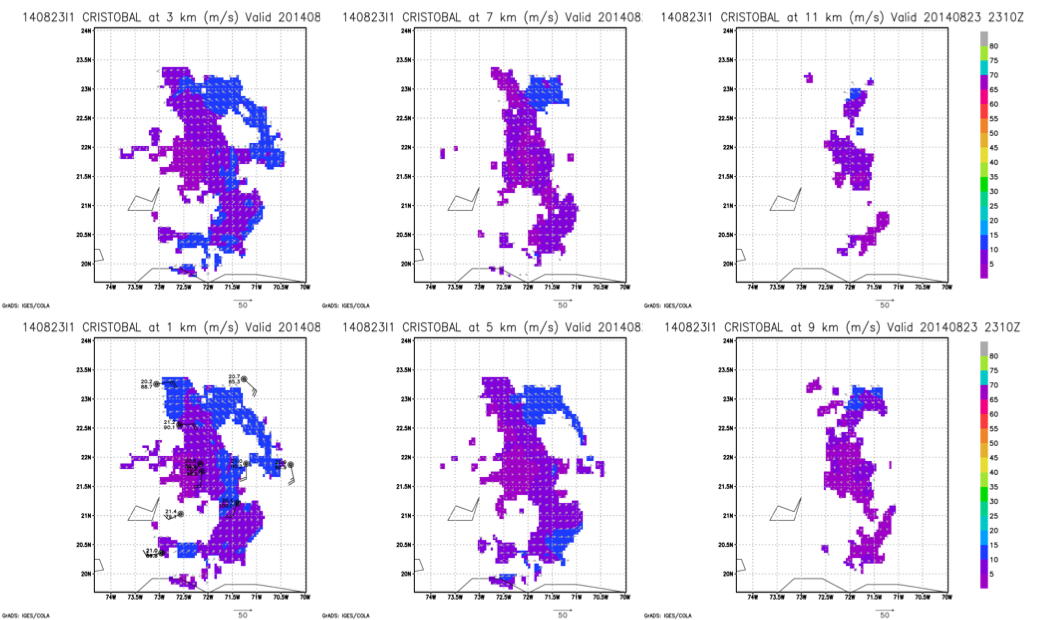
Proposed track
| Aircraft Commander | Justin Kibbey |
| Co-pilot | Robert Mitchell |
| Co-pilot | Scott Price |
| Navigator | Pete Siegel |
| Flight Engineer | Joe Klippel |
| Flight Engineer | Chris Lalonde |
| Flight Director | Ian Sears |
| Flight Director | Mike Holmes |
| System Engineer | Dana Naeher |
| Data Technician | Joe Greene |
| AVAPS | Jeff Smith |
| LPS | Sim Aberson (HRD) |
| Dropsondes | Hua Chen (HRD) |
| Radar | Kathryn Sellwood (HRD) |
| IWRAP | Joe Sapp (NESDIS) |
| IWRAP | Steve J Frasier (NESDIS) |
| Guest | Kyle Smith (UFla) |
Mission Plan :

NOAA43 will conduct an EMC-tasked TDR Experiment into Tropical Disturbance AL96 that eventually was named Cristobal, which was moving northward through the Turks and Caicos Islands. The proposal was for a butterfly pattern, three passes through the center of the storm, and return to MacDill. The aircraft will take off from MacDill AFB, FL at 1800 UTC and recover at MacDill AFB, FL at 0130 UTC.
|
Hurricane Research Division August 22, 2014 Aircraft: N43RF Proposed takeoff: 23/1800Z
TURN LOCATIONS
| #
| LAT
| LON
| RAD/AZM
| LEG
| TOTAL
| TIME
|
| deg min
| deg min
| nm/dg
| nm
| nm
| hr:mn
| 2 | 22 00 | 73 18 | 100/270 | 613. | 613. | 2:41
| 3 | 22 00 | 69 42 | 100/090 | 200. | 813. | 3:33
| 4 | 23 27 | 70 37 | 100/030 | 100. | 914. | 4:00
| 5 | 20 33 | 72 23 | 100/210 | 200. | 1113. | 4:53
| 6 | 20 33 | 70 37 | 100/150 | 100. | 1214. | 5:20
| 7 | 23 27 | 72 23 | 100/330 | 200. | 1414. | 6:13
| | ||||||||||||||
| Take off | Landing
| MacDill AFB, FL | 17:56 UTC
| MacDill AFB, FL | 01:36 UTC
| | ||

At takeoff time, the system was still not named a depression, even though there was moderate convection that seemed to be rotating about a center. The mission was largely flown as planned, with three passes through the 'center.' Because the system was in the genesis stage, the radius of maximum wind speed was very large; due to the distance from Tampa, the leg lengths were too short to reach this maximum, though it was seen in the three radar analyses that were completed. By the end of the flight, there were a number of intense convective cells with 50-dBZ reflectivity seen on the lower fuselage radar toward the southeast of the previously sampled center. It appeared that a center was trying to form there, and may have overtaken the previous center. During the flight, the old center was disorganized, as seen by the Doppler analyses, and was tilted toward the southeast.
14 sondes launched, No AXBTs
Mission Evaluation:

Overall, the flight was mainly uneventful, but it is a very good starting point for the subsequent flights into the storm, and may be a good genesis case for further study.
Problems :
The lower-fuselage radar locked up a few times, but was reset successfully each time. The flight director set incorrect Mission ID at the beginning of the flight, so first three sondes (and lots of HDOBS had to be resent with corrections. The lower-fuselage radar was in wedge mode during lass pass for Ocean Winds.
Sim Aberson
Nov. 4, 2014